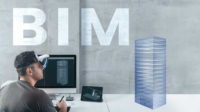
Figure 1a. Acoustical and seismic requirements were the top priorities at The Valley Performing Arts Center. (Photo courtesy of Tom Bonner Photography.)
In this overview of building information modeling, the authors review how BIM helped in three different projects, often with particular usage- and efficiency-based HVAC demands. While BIM’s space management skills can reduce costly changeorders and building design “clashes” ahead of time, in at least one instance, using BIM actually influenced the HVAC strategy for the better, too. See how HGA Architects and Engineers has used this to become a “model” firm.
As an early adopter of building information modeling (BIM) for a variety of projects, HGA Architects and Engineers (HGA) has found that 3-D software programs aid in efficiently and cost-effectively designing educational facilities that have increasingly complex programs.

Figure 1b. A rendering of the building illustrating the
coordination of structural systems accomplished by using BIM. (Figure courtesy
of CW Driver.)
Additionally, more and more higher education clients are mandating sustainable designs that go beyond even LEED® standards to reach net zero energy or carbon neutral design. When asked to factor in seismic bracing for projects in earthquake zones, which many of HGA’s California clients require, the staff has found using products like Revit® and Navisworks® from Autodesk® to be indispensible in coordinating architectural designs, engineering systems, and subcontractor plans with client input.
As architects and engineers integrate plans and systems during design and construction, BIM allows the teams to generate and manage building data. BIM manifests this data as “objects” with specific geometry, technical information, and relations and attributes. Throughout the design process, the team can extract different views or schedules from a building model and evaluate these objects as they relate to building geometry, spatial relationships, and geographic information, as well as quantities and properties of building components.
Because these 3-D design tools define objects parametrically, if one object is altered, so are the rest. For example, one of the primary advantages of conjoining all engineering systems, architectural designs, and client input within a BIM model is for “clash detection.” This means that, before construction begins, the program finds the places in which infrastructure and systems - walls, ductwork, conduits, plumbing, audio visual, and laboratory equipment - are touching. Once discovered, the team can make the necessary changes.
HGA has three higher education projects that have successfully utilized BIM. Two of these projects are in Southern California - the Science Complex at Los Angeles Harbor College and the Student Success Center at East Los Angeles College, a design/build partnership with Pinner Construction. The owners of both projects, the Los Angeles Community College District (LACCD), require architects and contractors to demonstrate facility with BIM programs during the bid process because these projects integrated a high level of sustainability, which added complexity to the design/build process.
The third higher education project using BIM is California State University Northridge’s Valley Performing Arts Center. In this facility, the need to manage the building’s seismic bracing requirements, the acoustical considerations of the performance halls and rehearsal spaces, and the special heating and ventilation factors all made modeling the building using BIM software the best way to ensure the building components were coordinated.
Out of more than 100,000 objects modeled in each of these three higher education projects, BIM modeling helped HGA decrease clashes to less than 1%.
CLASH DETECTION: CALIFORNIA STATE UNIVERSITY NORTHRIDGE
The Valley Performing Arts Center (VPAC), located in Northridge, CA, serves as a cultural hub for Cal State Northridge, the San Fernando Valley, and the Los Angeles area. Designed to meet LEED Silver criteria, the 166,000-sq-ft, multi-story performing arts center blends state-of-the-art technology with creative architecture and sustainable strategies.Using 3-D modeling, HGA visualized the complexity of VPAC’s shapes, functions, and systems -from the educational spaces and large lecture halls with raked seating and electrical rooms underneath to the mechanical mezzanines, catwalks, and fly spaces of the performance spaces and stages - and made adjustments where necessary.

Figure 2a. HGA used BIM to design the Los Angeles Harbor College Science Complex. (Photo courtesy of HGA Architects and Engineers.)
With these complex systems and requirements, the project’s electrical, mechanical, and structural engineers, architects, and its construction manager, CW Driver, collaborated using BIM for clash detection. After downloading the data, Navisworks produced a report that indicated potential obstructions and other conflicts between seismic bracing, sustainable initiatives, engineering systems, and architectural design. In performing arts centers, acoustics are critical, so the ductwork and HVAC systems are larger than usual to ensure airflow is slower and quieter. Given the larger physical size of the building infrastructure, utilizing BIM to minimize clashes allowed the team to proactively and successfully address these issues before construction began.
SUSTAINABLE STRATEGIES: LOS ANGELES HARBOR COLLEGE
Located in Wilmington, CA, the Science Complex is one of LACCD’s earliest BIM projects. The 73,767-sq-ft project includes 19 smart classrooms, wet and dry laboratories, a computer lab, four lecture halls, administrative offices, an outdoor classroom, and a Science Court. The project is designed to LEED Platinum criteria but is also a net zero energy/carbon neutral design. A photovoltaic system integrated into the building design serves as both a shading device and solar-power energy production system. It is designed to generate approximately 222,000 kWh of electricity and will save an estimated $39,000 per year in electrical costs. The system also reduces nearly 135,000 lbs of carbon dioxide, which helps offset the use of natural gas in the building.
FIGURE 2b. A cross-section of a metal wall panel highlights all the disciplines comprising the BIM model. (Photo courtesy of HGA Architects and Engineers.)
Similarly, BIM was used to evaluate ways to increase the complex’s natural daylight. As with the ventilation studies, BIM helped define the layout of program spaces for laboratories, classrooms, and auditoriums - each of which have different needs for natural daylight. Modeling with weather data highlighted the amount of light that would enter particular spaces at specific times of the day and year, allowing the team to study light levels at various points in time. As a result, specific architectural design aspects were amended. For instance, window placement, size, and shape were refined to provide students and staff with the best access to natural light throughout the year.
All major parties involved in the project - including the civil engineers who designed the detention basins that harvest rainwater, the electrical engineers modeling their systems, mechanical engineers working on HVAC systems, design/build subcontractors who actually install the systems, and the architects working on the design - collaborated to resolve potential issues and find optimal solutions before construction. And, because BIM provides a graphic simulation with metrics of designated portions of a building, information could be sent to the USGBC for LEED documentation.
ARCHITECTURAL SOLUTIONS: EAST LOS ANGELES COLLEGE
The Student Success Center at East Los Angeles College co-locates nine departments into one flexible learning environment that encourages collaborative student-faculty interaction. The 130,000-sq-ft, five-story building includes tutoring and computer labs, classrooms, offices, language labs, and common spaces. Designed to LEED Gold standards, the center is a net zero energy facility that incorporates sustainable strategies including natural ventilation, high-performance glazing, radiant cooling, tuned solar shading systems, and energy-recovery wheels for highly efficient HVAC systems.As with Los Angeles Harbor College’s Science Complex, the design team utilized BIM for wind studies and daylighting analysis to create an ideal learning environment for the diverse student body. Using BIM, the team could ‘pull apart’ the Success Center’s complex program to analyze design possibilities. As a result, architects separated faculty offices from the classrooms, moving both into two distinct wings connected by an open-air, five-story courtyard, the building’s central courtyard, and primary entrance. A shaded exterior atrium for the classroom wing and an interior skylit space in the office wing provide informal gathering spaces for students while further reinforcing natural ventilation and daylighting.
FUTURE USES FOR BIM
BIM allows team members to work in a seamless, interdisciplinary, and collaborative fashion with clients on complicated facilities. HGA is currently using BIM for a new application to renovate and design an addition to an existing music building at Macalester College in St. Paul, MN. In Revit, the building has been stripped to its base structure, allowing architects to evaluate floor-to-ceiling heights and reconfigure the acoustical and HVAC systems in ways that will best accommodate sound requirements in the rehearsal and performance spaces. BIM has made it easier to accurately insert these critically important systems into an existing space.
Figure 3a. A rendering of the East Los Angeles College Student Success Center with the proposed sustainable ideas. (Photo courtesy of HGA Architects and Engineers.)

Figure 3B. BIM helped designers integrate engineering systems in every classroom. (Photo courtesy of HGA Architects and Engineers.)
Overall, BIM helps eliminate errors and proactively address potential issues before they become problems in the field. For HGA, using BIM brings added value to clients and their projects while achieving benchmark results.ES




